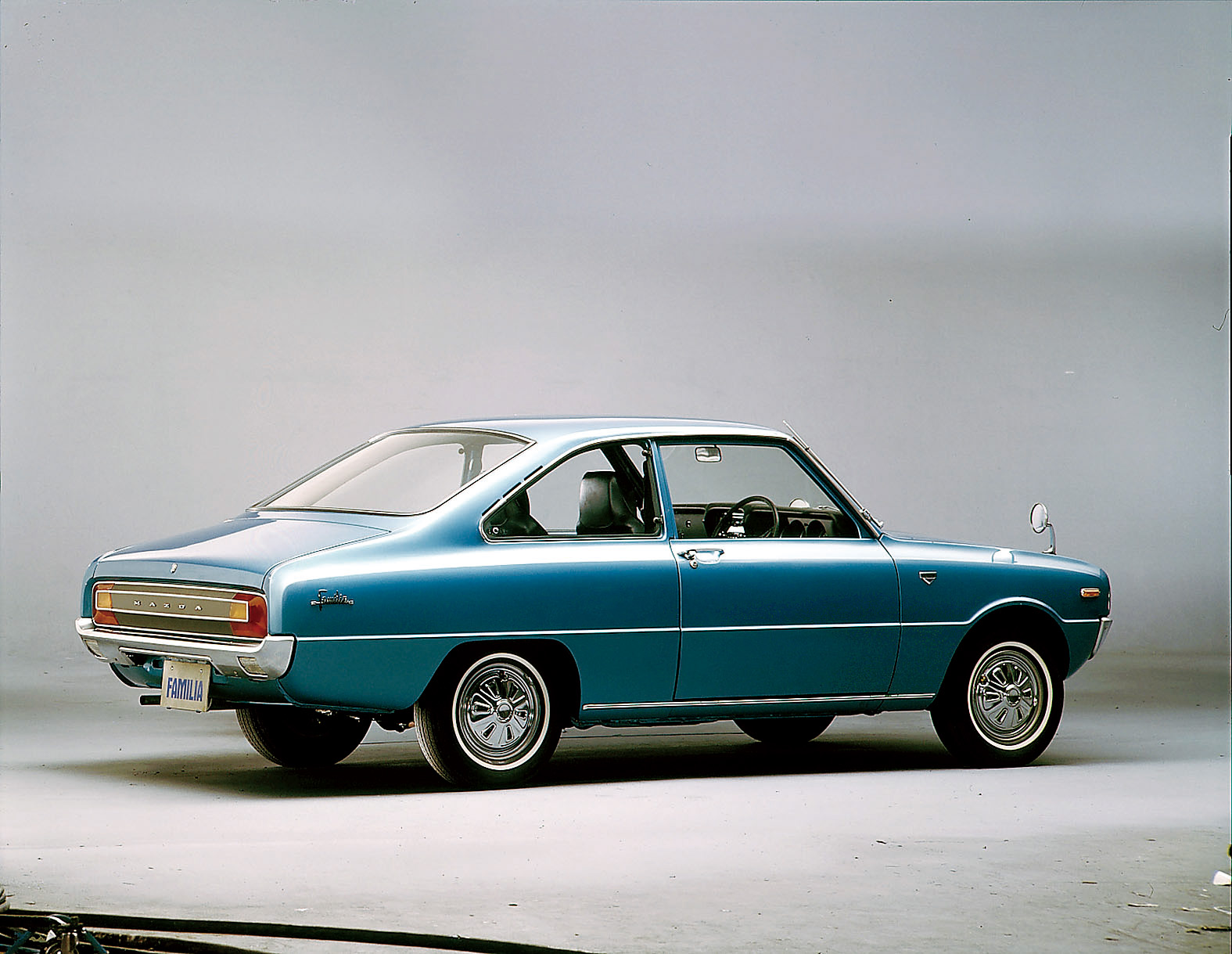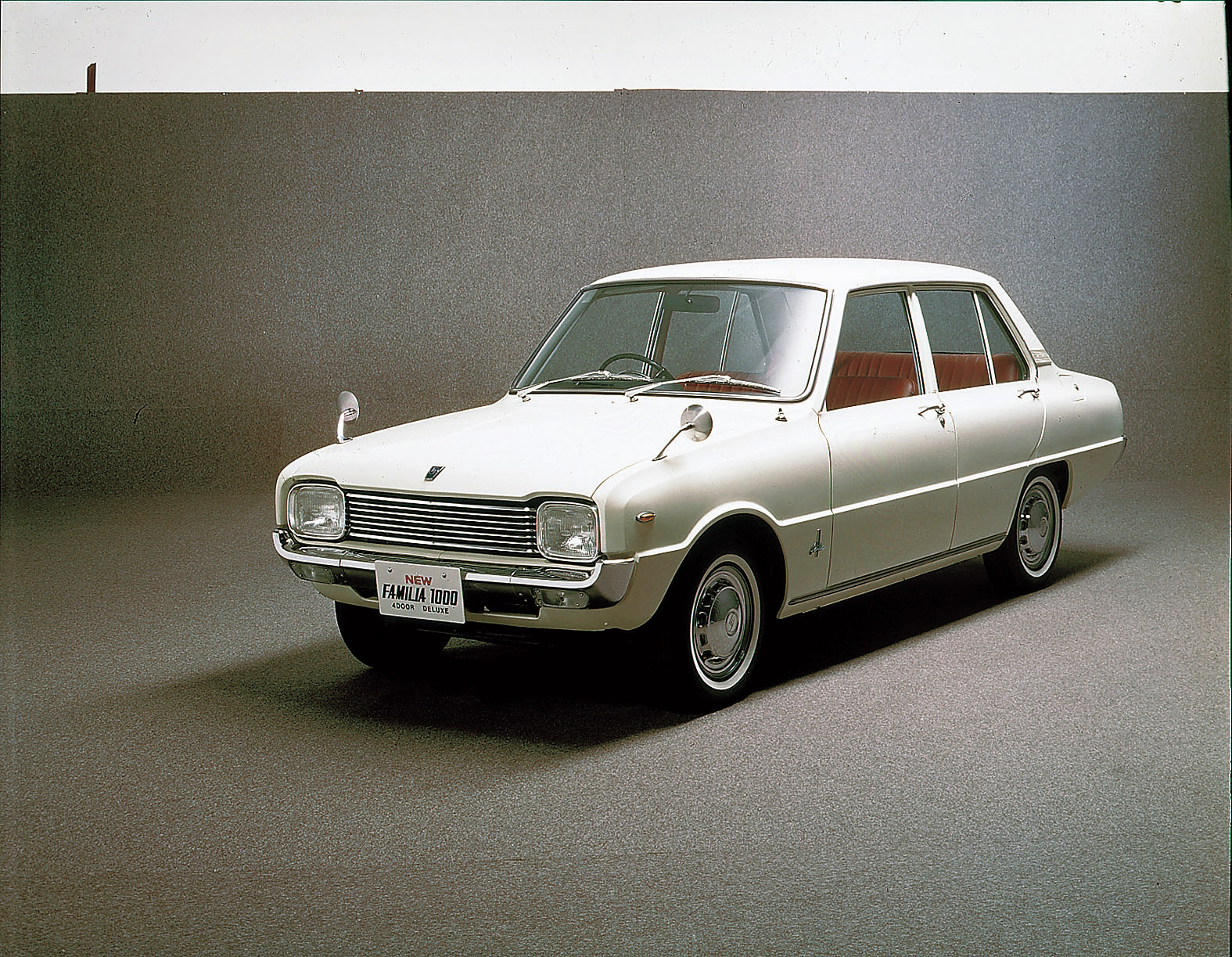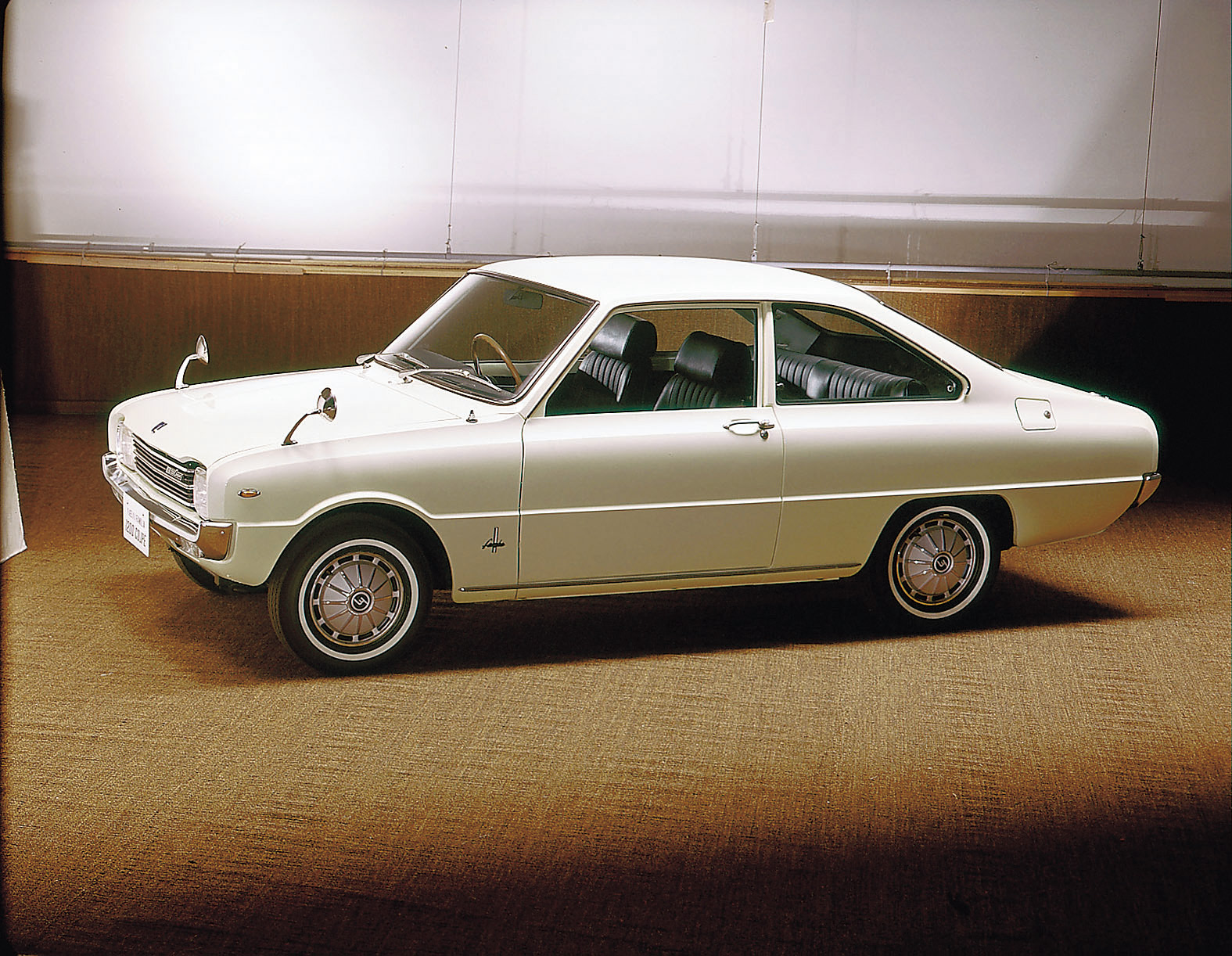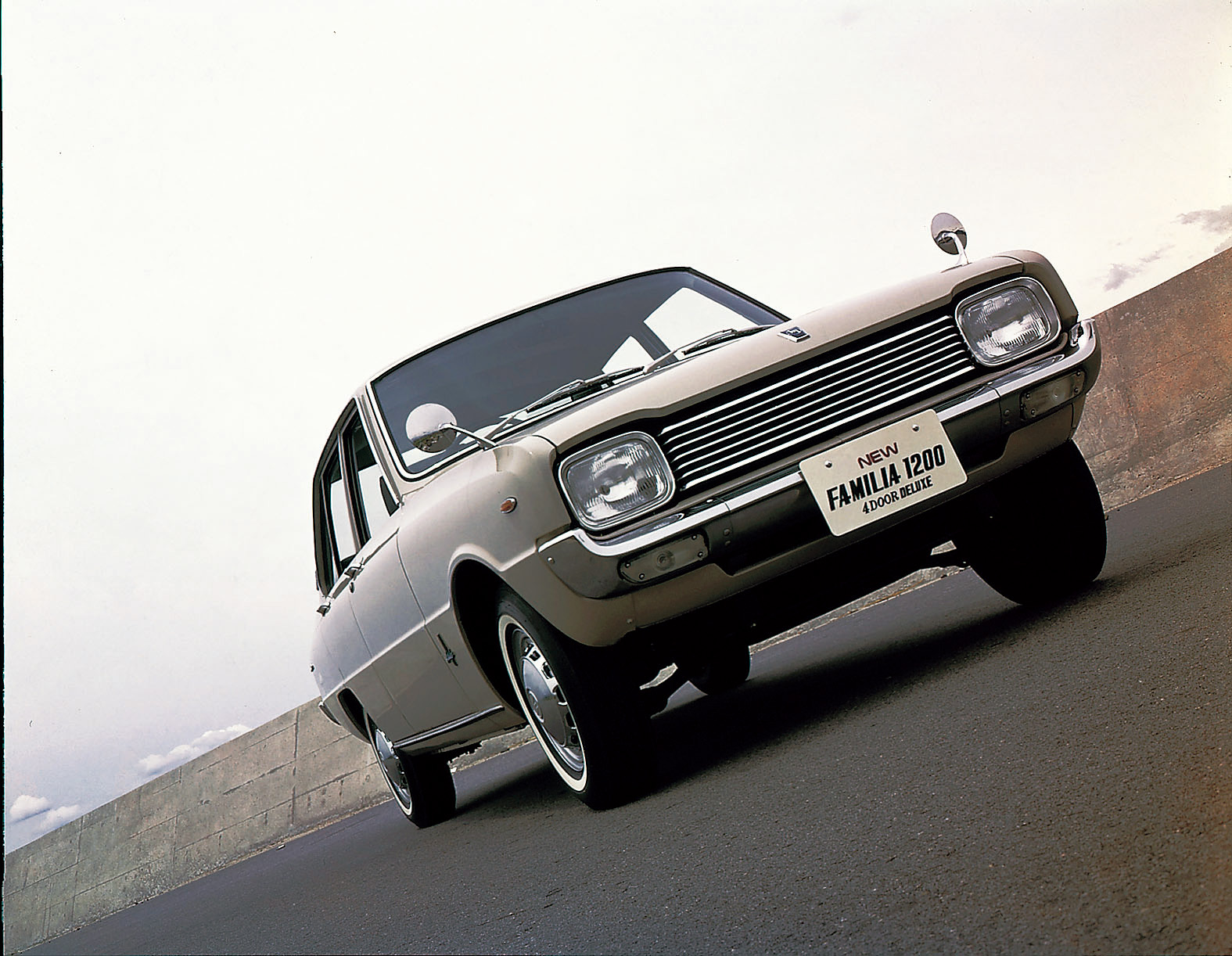Mazda celebrates 50 years in Canada
“It was a real jackrabbit of a car.” That’s how Kim Fabbro, an experienced racer with hours of track time behind the wheel of his own second-generation Mazda RX-7, describes the feel of driving a race-prepped 1968 R100. “It was very light on its feet, and quick in the corners,” he adds. “Maybe even a little on the dicey side.”
The tiny Mazda R100 coupe arrived in Canada 50 years ago with something unusual under the hood: a rotary engine producing a full 100 horsepower in stock form. It was an engine that set the brand apart from its rivals, married to a quick and nimble chassis. Here were the first hints that maybe there might be something to these new Japanese cars that were trickling into the country—something beyond bare-bones economy anyway.
Mazda opened up shop on July 19, 1968, in Burnaby, British Columbia, the brand’s second foray outside of Japan, and its first arrival in North America. Having established operations in Australia the previous year, Canada represented a gateway to eventual entry in the U.S. market, and establishing a beachhead near the port of Vancouver was simply good logistics.
Honda had already arrived direct from Japan in the mid-1960s, and Datsun and Toyota had pushed northward from their early beginnings in the United States. To Canadian consumers, Japanese cars weren’t all that dissimilar from the compact British Leyland products they already knew. Some groundwork had been laid.


Further, some Canadians were already familiar with the name Mazda, as Westinghouse and GE had licensed the trademark for use with some of its incandescent bulbs. When the fledgling automotive exports of the Toyo Cork Kogyo company arrived, they were therefore perhaps not as alien as you might expect. Like their rivals, these early Mazdas were inexpensive to purchase and run: a 1969 advertisement in a student newspaper at the University of British Columbia reads, “Only $2295. The only option you can pay for is a radio, if desirable.”
In its first year, Mazda managed to move just under 1000 vehicles, a large portion of them the small and durable B-Series pickup truck, a nameplate that would soldier on for nearly 45 years. The Mazda 1200 sedan that would set you back $2295 (without a radio) became the mainstream offering of the brand, less powerful than the rotary-powered cars, but still relatively lively to drive. Later, it would be followed by the GLC, a zippy and practical compact that found its way into many a Canadian driveway.
By 1970, Mazda had established itself well enough to move into the U.S., as well as setting up its first dealerships in eastern Canada. Quebec in particular would grow to become a hugely important market for the brand, although these early cars would struggle to survive the long, damp winters and the salty roads of the east. All Japanese marques had issues with rust to begin with, and Mazda was no exception.

At the same time, two fuel crises in the 1970s put pressure on Mazda’s signature technology, the smooth but hardly efficient rotary engine. Despite increasing gasoline costs, Mazda continued to produce rotary-powered cars, including the RX-3 and larger RX-5, and, in 1978 the RX-7.
Other manufacturers have experimented with the rotary engine, but only Mazda persisted with it. In the 1960s, many smaller Japanese automakers were swallowed up by the major marques… Prince by Nissan, Hino by Toyota. Mazda was only able to survive thanks to a heroic and miraculous breakthrough by 47 engineers. Against all odds, this small team was able to come up with a solution to rotary-engine longevity. The engineers called themselves the Shi-ju-shichi-shi after a legendary group of 47 ronin who fought valiantly during Japan’s feudal period. The first rotary-powered Mazda was the Cosmo Sport, which was never sold in Canada. The country’s favourite rotary, without a doubt, was the RX-7 that arrived in 1978.
Even now, vintage footage of first-generation RX-7s racing everywhere from Westwood to Mosport show what a giant-killer this car was. Originally equipped with a 100-hp 12a rotary, tuners were soon figuring out tricks to uncork the true potential of this unique engine. RX-7s were low, loud, and fast, shark-like shapes flitting past the bulky domestic iron. Further, while not the most efficient option for the street, the rotary was capable of running reliably at the limit, ideal for endurance racing.




While RX-7s were excelling at club racing on the tarmac, a plucky little turbocharged hatchback called the GTX was becoming a favorite of rally racers. Based around the 323 hatchback body, the GTX added all-wheel-drive, a turbocharged 1.6-liter engine, and reinforced door sills to deal with rough roads. Few survive today, having lived joyous but rough lives slewing though gravelly corners.
At the end of the 1980s, Mazda was an established brand with a sporty luxury coupe (the MX-6, a twin to the Ford Probe), mid-size and full-size passenger cars (the 626 and 929), the long-running B-series pickup, and even a rough and tumble minivan (the MPV, with available all-wheel drive). What launched next, however, would define Mazda attributes for the next three decades and beyond.
Debuting in 1989, the Miata took the spirit of British motoring and refined it with reliability and durability. The Miata had nearly all the character of an MG or Triumph, but you could use it to explore far-off backroads without fear of not making it back home. Despite Canada’s often inclement weather, Canadians snapped them up, with nearly 3000 sold in the first year.
Through the 1990s, Mazda refined the recipe for its model range, even as some badge-engineered Ford products began cropping up. It still managed to do quirky, as evidenced by the MX-3 hatchback, which boasted the smallest production V-6 in the world. However, what would most affect the brand’s Canadian prospects was the day, in 1997, that Denis Leclerc bought a partnership in Albi Mazda.

Today, Leclerc is the sole owner of the dealership, which is located just north of Montreal. The largest Mazda dealer in the world, Albi is referred to as Le Géant, and sells 5500 new Mazdas per month, every month. It employs some 350 people, and even has both a hair salon and a body shop on-site. And, because this is Quebec, it’s not open on Saturday or Sunday, traditional car-selling days. Thanks in part to Leclerc, the province of Quebec remains a Mazda stronghold.
In its 50th year in Canada, Mazda faces the same sort of identity crisis that has troubled so many automotive brands. Sales of sedans and hatchbacks are down, while sales of crossovers are up. As a company that began with a sporty little compact and kept the faith with a sports car that punched above its weight, it should be hard for Mazda to balance enthusiast appeal with the practical attributes that people want to buy.
Yet things are still going strong, with 165 Mazda dealerships across Canada. The appearance of turbocharging in the CX-9 and Mazda6 sedan has given the brand some much-needed vigor again. The reworked MX-5 is a gem, made even better by an updated, more powerful engine this year that revs quicker and higher. And even the compact CX-3 crossover is a delight when you push it hard.
Fifty years on, Mazda still makes little jackrabbits that are light on their feet and quick in the corners. They remain affordable and economical, but they still manage to inject a little driving delight into everyday life. Canada’s lucky to have you, Mazda. Keep up the good work.










